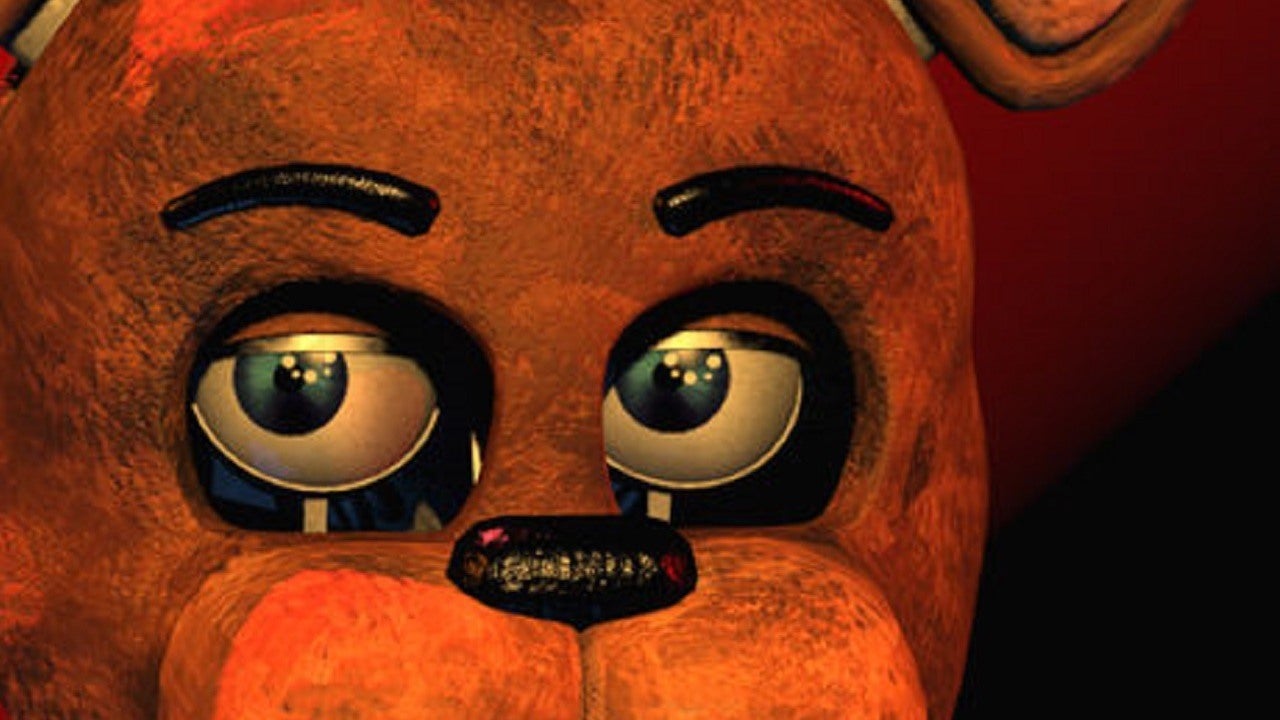The Joker is a character bathed in mystery. The fact that we know so little about this villain and who he was before becoming Batman's greatest foe is a big part of his charm. But that hasn't stopped some Batman stories from trying to shed light on Joker's mysterious past. Even the Joker movies starring Joaquin Phoenix as the Clown Prince of Crime and directed by Todd Phillips put their own spin on the iconic character.
Are you familiar with the many conflicting stories about Joker's past? If not, read on for some of the most notable explanations DC's comics and movies have given for the rise of Batman's greatest foe.
The Original Origin Story

Though he debuted in 1940's Batman #1, it would be many years before DC attempted to establish some sort of origin story for the villain. Detective Comics #168 revealed that the Joker started out as a small-time thief named the Red Hood. After robbing a playing card company and escaping by swimming through a polluted river, Red Hood found that his face and hair had become bleached. Thus, the Joker was born.
Learn how Heath Ledger's Joker was born in the video below:
The Killing Joke

1986's Batman: The Killing Joke built on the basic framework of the Red Hood origin story but added tragic new layers. This story suggests that Joker was once a chemical plant worker who quit his job to become a stand-up comic. When that failed, he agreed to help a gang of criminals rob his old employer. But after being chased by Batman, this failed comedian fell into a vat of chemicals. Combined with the trauma of losing his wife and unborn child in a freak bottle warmer accident, all the ingredients for a sadistic, killer clown were in place. However, The Killing Joke also suggests that Joker's own recollection of his past may be tainted.
Jack Napier

1989's Batman was the first movie to explore the Joker's origin, offering up the most comprehensive take fans have ever seen. The film reveals that Joker was once Jack Napier, a high-level enforcer for Boss Carl Grissom who also happened to be sleeping with Grissom's girlfriend. Napier's boss set him up to be killed by the GCPD. As in various comic stories, a run-in with Batman culminated with Napier falling into a vat of chemicals and becoming physically and psychologically changed. A bullet wound to his face also left Napier with a permanent rictus grin.
Batman '89 broke with tradition not just by giving Joker an origin story, but by fundamentally intertwining his story with that of Batman's. A flashback scene reveals that a young Napier was responsible for murdering the Waynes, sending Bruce on his path to becoming Batman.
Joker the Gangster

Batman: The Animated Series paid little attention to fleshing out Joker's background, except in the 1993 feature film Mask of the Phantasm. There, Batman encounters a photograph that shows a pre-transformation Joker working as a mob enforcer. But as Joker shows, he has little love left for his former bosses.
Joker's Therapy Session

The Batman: The Animated Series franchise did also briefly flirt with exploring Joker's origin in the graphic novel Mad Love (which was later adapted into an episode of the series). Even as this story establishes the origin of Harley Quinn, it shows Joker confiding in his new psychiatrist and regaling her with a story of his youth. According to Joker, his abusive father only showed signs of affection when he took his son to the circus. After one good-natured prank gone wrong, Joker forever came to associate laughter with violence and pain.
The Case Study

"Case Study" is a story in the Batman: Black and White anthology series. This tale added to the traditional Red Hood origin by suggesting that Joker was once a bank robber who was so successful that he became bored with normal crime. The Red Hood persona was a way of restoring the thrill of the crime. Furthermore, this story suggests that Joker isn't actually insane, but merely fakes insanity in order to avoid the death penalty. However, because the case study in question was written by Harleen Quinzel, its veracity is in serious doubt.
The Dark Knight's Conflicting Stories

2008's The Dark Knight features multiple origin stories straight from the Joker's scarred lips, though none of them seem very plausible. First, Joker tells crime lord Gambol that his father was an alcoholic abuser who turned especially mean one night. According to Joker, his father carved up his face even as he asked his son, "Why so serious?"
Joker delivers a completely different anecdote to Rachel Dawes later in the movie. This time, he claims that his wife fell deep into debt with the mob and had her face slashed in retribution. A devoted husband, he chose to disfigure his own face in a show of support. Instead, his wife found his scars repulsive and left him for good, driving him a little mad in the process.

While neither Joker anecdote is likely true, some fans believe that a different sequence in The Dark Knight may offer a clue as to Joker's identity. Joker tells a captive Harvey Dent that no one panics when a truck full of soldiers is blown up, because "It's all part of the plan." That oddly specific metaphor could be drawn from Joker's own experiences. Is he himself a former soldier who was disfigured in an attack? It would certainly explain his proficiency with weapons and explosives and his desire to bring chaos and suffering to Gotham.
Lovers and Madmen

A storyline called Batman: Lovers and Madmen offers its own spin on Joker's origin. In this case, he was a career criminal named Jack who gets bored with his line of work until Batman showed up to make things interesting. Jack's face is scarred after being hit by a Batarang. Later, when being tortured by a rival gang, Jack is doused in a spray of anti-psychotic chemicals and completes his transformation.
Joker's Childhood

In The Brave and the Bold #31, the Atom travels inside Joker's warped mind in order to save him from a mysterious, terminal disease. There, the Atom finds himself lost in Joker's childhood memories. This story shows that Joker was a murderous sadist from his early days. He even trapped his family inside their home and set it on fire as payback for finding his collection of animal carcasses.
Alfred as the Joker

A short series called Whatever Happened to the Caped Crusader? brings together a number of Batman's friends and foes to eulogize him after his death. In this story, Alfred reveals that he was actually Joker all along. He employed his skills as a thespian to create a convincing disguise and give his master a purpose in life. This dreamlike story isn't meant to be taken seriously, but it's still an interesting take on the Batman/Joker dynamic.
Flashpoint's Joker

The Flashpoint crossover introduced an alternate timeline created by Barry Allen. In this world, young Bruce Wayne was killed by the mugger's bullet, compelling Thomas Wayne to become Batman and Martha Wayne to become Joker. The two estranged lovers finally reconnect in the climax of the spinoff series Flashpoint: Batman - Knight of Vengeance, but only for more tragedy to strike. When Thomas tells Martha about an alternate world where their son lives to become Batman instead, the thought drives her over the edge and she kills herself.
Joker's Aunt Eunice

2013's Batman #23.1 offered a new take on Joker's origin. Here the Clown Prince of Crime reminisces about his childhood living with his Aunt Eunice, a cruel and abusive caretaker who enjoyed washing her nephew with bleach. Eventually, this caused permanent brain damage and Joker's distinctive bleached skin. As usual, it's best to assume Joker is an unreliable narrator.
Red Hood One

The New 52 Batman comic tackled a new version of Batman's origin story with the Zero Year storyline. While Riddler served as the main villain of the story, one subplot involved a conflict between a rookie Batman and the Red Hood Gang. In this version of events, the proto-Joker is Red Hood One, a ringleader who blackmails other Gotham residents into helping him sow chaos throughout the city. Red Hood One even seems aware of his destined rivalry with Batman, willingly plunging into a vat of chemicals and embracing his rebirth.
The Pale Man

The New 52 Batman series conjured up a completely different potential origin story for Joker in a storyline called Endgame. This story gave Joker a supernatural twist, suggesting that he's older than Gotham City itself. Supposedly, Joker discovered a pool of a mystical chemical called dionesium deep in a cave. This chemical transformed him into an immortal demon called "The Pale Man," and he's haunted Gotham ever since.
Jerome and Jeremiah

The TV series Gotham introduced a wildly different take on Joker. The series focused a great deal on a character named Jerome Valeska, a former circus worker with a penchant for cruelty and murder. Jerome showed many characteristics of the classic Joker, but was eventually killed off in Season 4. However, his final act was to mail a box of toxic laughing gas to his twin brother, Jeremiah. Exposure to the gas drove Jeremiah mad and gave him a very Joker-like appearance, suggesting that this Valeska brother was destined to become the Clown Prince of Crime.
The DCEU

Little is known about the Joker of the DC Extended Universe, as he only appeared in 2016's Suicide Squad and briefly in 2021's Zack Snyder's Justice League before Warner Bros. put the kibosh on this shared universe. However, Suicide Squad shows that this version of the character was born when he fell into a pit of toxic chemicals, as have so many other incarnations. The film shows Joker "baptizing" Harley Quinn in order to repeat that process all over again.
Batman as the Joker

The 2017 crossover Dark Nights: Metal pits Batman and the Justice League against the Dark Knights, a group of twisted Batmen created from Bruce Wayne's nightmares about himself. The leader of this group is a villain called The Batman Who Laughs - literally a Batman turned into the Joker. He was infected by a toxin after finally killing Joker, one which drove him mad and made him become the very thing he hates most.
The Three Jokers

One of the last big twists to come out of DC's New 52 era involved the revelation that there are actually three versions of Joker in Gotham City. That twist was followed up in 2020's Batman: Three Jokers miniseries. The three Jokers in question are The Criminal (the original Golden Age Joker), The Clown (the campier Silver Age Joker), and The Comedian (the modern version seen in Batman: The Killing Joke). The Criminal and The Clown are both killed by the end of the series, but not before they attempt to transform Joe Chill into the ultimate Joker. At the end of the story, Batman also reveals that he deduced The Comedian's true identity within days of their first encounter, and he's been keeping an eye on the villain's estranged wife and child ever since.
Barry Keoghan's Joker

Matt Reeves' The Batman may focus on Riddler, Penguin, and Catwoman as its main Bat-villains, but the reboot does squeeze in a new version of Joker played by Barry Keoghan. We don't learn much about this incarnation of the character in his limited screen time, though his horrifically scarred face speaks volumes. Reeves has hinted that this Joker has a biological condition that causes his rictus grin and disfigured facial features.
Joker's First Year

2024's Joker: Year One storyline seeks to reconcile some of the many conflicting takes on Joker's origin story while also offering new insight into how an ordinary criminal became a larger-than-life supervillain. Year One takes place shortly after Joker emerges from the pool of chemicals in Batman: The Killing Joke, though it also treats Batman: Zero Year as part of the canon.
In Year One, we learn that Joker was trained by one of Bruce Wayne's teachers, Daniel Captio. Captio teaches Joker how to conquer his fears and unleash the darkest aspects of his personality. This also provides a very different explanation for the Three Jokers phenomenon, as we see Joker mentally forming several alternate personalities similar to Batman's Zur-En-Arrh persona.
Joaquin Phoenix's Joker

Director Todd Phillips and star Joaquin Phoenix bring a whole new dimension to the Joker's origin story with their films, which depict him as a disturbed person named Arthur Fleck who spirals into madness and violence. In 2019's Joker, Arthur is a strugling party clown who becomes a folk hero to the downtrodden citizens of Gotham after he kills several people and then murders comedian Murray Franklin on live TV. Arthur spends part of the film believing himself to be the illegitimate son of Thomas Wayne (which would make him Bruce's half-brother), but that's established to be a lie told by his narcissistic mother.
Phoenix returns to the role in 2024's Joker: Folie à Deux, which also introduces Lady Gaga as Arthur's admirer and fellow Arkham inmate Harleen "Lee" Quinzel. The sequel is also a musical, offering a stylized look at what happens when Arthur fights for his freedom and finds love in a city still obsessed with the Joker.
For more on Joker: Folie à Deux, check out IGN's review of the Joker sequel and learn what Phoenix and Gaga had to say about Joker and Lee's bad romance.
Note: this story was originally published on 09/27/2018 and updated on 10/01/2024 with the latest developments regarding Joker.
Jesse is a mild-mannered staff writer for IGN. Allow him to lend a machete to your intellectual thicket by following @jschedeen on Twitter.







